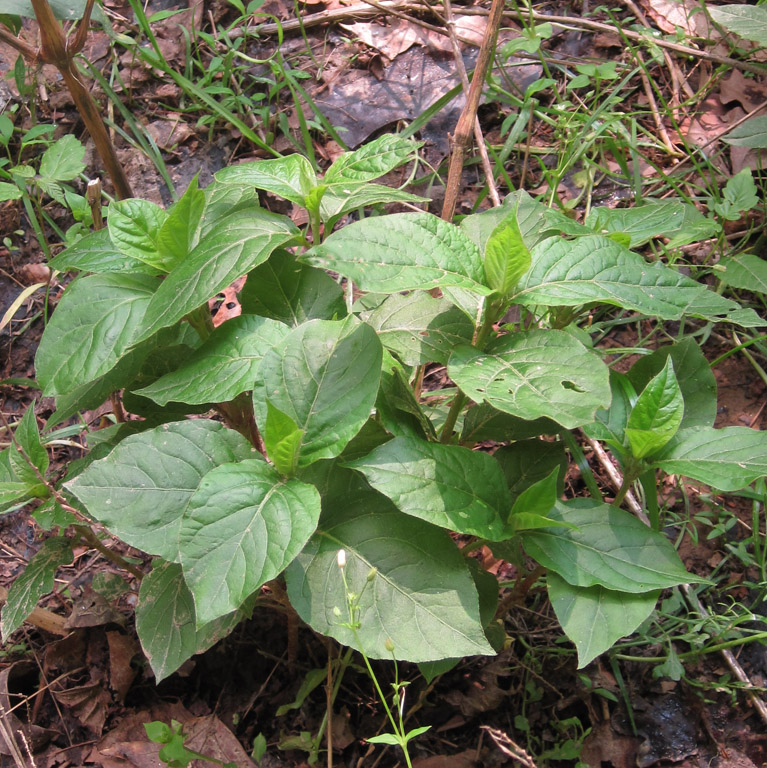Achyranthes japonica var. hachijoensis
Japanese Chaff Flower| Category |
|---|
| Forb/Herb |
|
Similar Species May be confused with the following native and/or non-native species. Landscape Alternatives lists native horticultural substitutes |
Amaranthus sp. (Pigweed) Verbena urticifolia (White Vervain) |
|---|

Description
Height
Japanese chaff flower is a perennial. Mature stems are 2.5 to 5 feet (0.75-1.5m).Stems
Stems are smooth to slightly pubescent.Leaves
Leaves are opposite and simple with entire margins. Leaf shape is ovate to elliptic 1 to 5.3 in (2.5-13.5cm) long and 0.1 to 3in (0.2-6.8cm) wide. Leaves have a tapering base and acute apex. The veins on leaf underside is pubescent, with a slightly short pubescence on the upper surface.Flowers
The flowers lack petals and occur on a spike about 7/8 to 1.75 in (2-4cm) elongating to 8.5 in (21cm) in fruit. The flowers occur a right angles to the flowering stem, and the fruit lie appressed when mature.Fruits/seeds
The fruit is a bladder-like elliptical fruit (not splitting), 0.1 in. (2.5mm). The fruit possesses a pair of stiff bracts that aid in the dispersal of the fruit via fur or clothing.Photos: David D. Taylor, Daniel Boone National Forest, KY
For more images of Japanese Chaff Flower, visit Invasive.org.
Life History
Habitat
Japanese chaff flower may occur in bottomland forests and other riparian areas. It can be spread by flood waters. It can root in shallow water or occur as floating mats. It may be found in conjunction with Eichhornia crassipes (water hyacinth).Origin and Distribution
Native to eastern Asia, Japanese chaff flower has been documented in Alabama, Tennessee, Kentucky, Illinois, Indiana, Ohio, and West Virginia. Floods in these areas could send it downstream to Arkansas, Missouri, Louisiana, and Mississippi.Management Recommendations
Glyphosate Foliar Spray
This method is effective on populations where mechanical control measures are not feasible or are impractical. Apply a 2% solution of glyphosate and water plus a non-ionic surfactant using a tank or backpack sprayer to thoroughly cover all leaves. Do not apply so heavily that herbicide drips off the leaf surface. Glyphosate is a non-selective herbicide requiring caution not to spray non-target species. Refer to manufacturer’s label for specific information and restrictions regarding use.Hand Pull
This method of control may be effective for small populations of Japanese chaff flower. Hand-pulling is an extremely effective method of reducing population and seed productivity. Hand-pulling of plants can be done during most of the year. If plants have fruits present, they should be bagged and disposed of to prevent seed dispersal. Care should be taken to minimize soil disturbance.Plants may be strongly rooted and require digging. Branches with seeds may persist on plants. Remove in winter or early spring before surrounding vegetative growth interferes.
